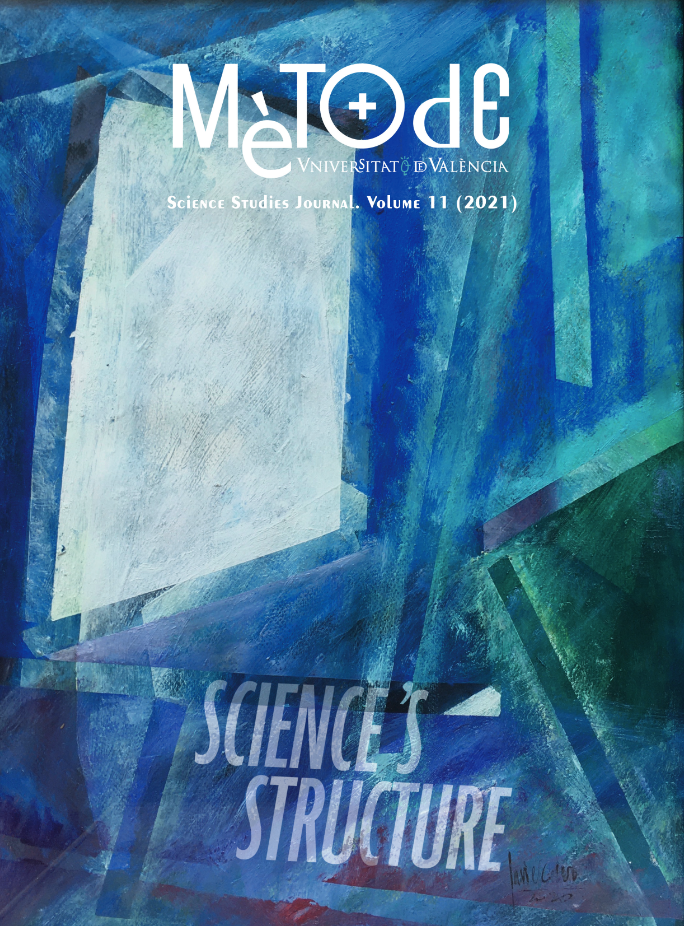Standardisation and social ordering: A change of perspective
DOI:
https://doi.org/10.7203/metode.11.16013Keywords:
synthetic biology, standards, infrastructures, social orders, responsibility Abstract
Abstract
This article examines standardisation in synthetic biology as a form of social coordination and ordering. I discuss standardisation by exploring what makes standards possible, and offer an understanding based on infrastructures: technical and social systems that support the existence and operation of accepted standards. By exploring the role of social infrastructures, I contend that standards depend upon social ordering: ways of arranging people in particular positions, relations, and hierarchies. I suggest that synthetic biologists ought to develop an awareness of these social orders, take responsibility for their creation, and accept accountability for their consequences, both technical and social.
 Downloads
Downloads
 References
References
Anderson, J. C., Dueber, J. E., Leguia, M., Wu, G. C., Goler, J. A., Arkin, A. P., & Keasling, J. D. (2010). BglBricks: A flexible standard for biological part assembly. Journal of Biological Engineering, 4(1). http://doi.org/10.1186/1754-1611-4-1
Arkin, A. (2008). Setting the standard in synthetic biology. Nature Biotechnology, 26(7), 771–774. http://doi.org/10.1038/nbt0708-771
Barnes, B. (2001). Practice as collective action. In T. Schatzki, K. Knorr Cetina, & E. von Savigny (Eds.), The practice turn in contemporary theory (pp. 17–28). Routledge. http://doi.org/10.4324/9780203977453
Canton, B., Labno, A., & Endy, D. (2008). Refinement and standardization of synthetic biological parts and devices. Nature Biotechnology, 26(7), 787–793. http://doi.org/10.1038/nbt1413
Endy, D., & Arkin, A. (1999). A standard parts list for biological circuitry. Defense Advanced Research Projects Agency.
Frow, E. K. (2013). Making big promises come true? Articulating and realizing the value of synthetic biology. BioSocieties, 8(4), 432–448. http://doi.org/10.1057/biosoc.2013.28
Mutalik, V. K., Guimaraes, J. C., Cambray, G., Lam, C., Christoffersen, M. J., Mai, Q.-A., Tran, A. B., Paull, M., Keasling, J. D., Arkin, A. P., & Endy, D. (2013). Precise and reliable gene expression via standard transcription and translation initiation elements. Nature Methods, 10(4), 354–360. http://doi.org/10.1038/nmeth.2404
Sauro, H. M. (2008). Modularity defined. Molecular Systems Biology, 4(1), 166. http://doi.org/10.1038/msb.2008.3
Schaffer, S. (1999). Late Victorian metrology and its instrumentation: A manufactory of ohms. In M. Biagioli (Ed.), The science studies reader (pp. 457–478). Routledge.
Schyfter, P. (2015). Metrology and varieties of making in synthetic biology. In O. Schlaudt, & L. Huber (Eds.), Standardization in measurement: Philosophical, historical and sociological issues (pp. 25–38). Pickering & Chatto. http://doi.org/10.4324/9781315653648
Vaughan, D. (1996). The Challenger launch decision: Risky technology, culture, and deviance at NASA. The University of Chicago Press. http://doi.org/10.7208/chicago/9780226346960.001.0001
Wenger, E. (1998). Communities of practice: Learning, meaning and identity. Cambridge University Press. http://doi.org/10.1017/CBO9780511803932
Downloads
Published
How to Cite
-
Abstract994
-
PDF392
-
(Español)6
Issue
Section
License
![]()
All the documents in the OJS platform are open access and property of their respective authors.
Authors publishing in the journal agree to the following terms:
- Authors keep the rights and guarantee Metode Science Studies Journal the right to be the first publication of the document, licensed under a Creative Commons Attribution-NonCommercial-NoDerivatives 4.0 International License that allows others to share the work with an acknowledgement of authorship and publication in the journal.
- Authors are allowed and encouraged to spread their work through electronic means using personal or institutional websites (institutional open archives, personal websites or professional and academic networks profiles) once the text has been published.





